Discover 11 hidden attractions, cool sights, and unusual things to do in Suffolk (United States). Don't miss out on these must-see attractions: Riddick House, Suffolk Seaboard Station Railroad Museum, and Cedar Hill Cemetery. Also, be sure to include Glebe Church in your itinerary.
Below, you can find the list of the most amazing places you should visit in Suffolk (Virginia).
Table of Contents
Riddick House
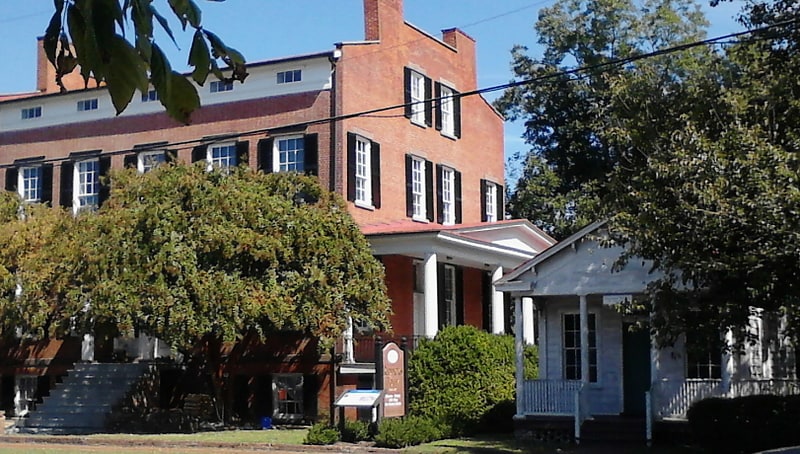
Museum in Suffolk, Virginia. Riddick House, also known as Riddicks Folly, is a historic home located at Suffolk, Virginia. It was built in 1837, and is a 2 1/2-story, five bay by four bay, Greek Revival style brick townhouse. The front facade features a one-story diastyle Doric order portico with a triangular pediment supported by two fluted columns and two plain pilasters. It also has a one-story tetrastyle portico added across the south end in 1905. During the American Civil War, General John J. Peck and his staff maintained Union Army staff headquarters in the house.
It was added to the National Register of Historic Places in 1974. It is located in the Suffolk Historic District.
Riddick's Folly is open as a historic house museum.[1]
Address: 510 N Main St, 23434-4427 Suffolk
Suffolk Seaboard Station Railroad Museum

Specialty museum, Historical place, Museum
Address: 326 N Main St, 23434-4447 Suffolk
Cedar Hill Cemetery

Cemetery in Suffolk, Virginia. Cedar Hill Cemetery, also known as Green Hill Cemetery, is a historic cemetery and national historic district located at Suffolk, Virginia. The district encompasses four contributing structures, one contributing site, and three contributing objects in the a city-owned, 25-acre, public cemetery dating to 1802. Grave markers within the cemetery date from the early 19th century to the present day. This cemetery is a representative example of public cemetery planning and funerary artwork found in southeast Virginia and Suffolk. The contributing structures include the Darden, Hosier, Hill and Brewer-Godwin mausoleums and the contributing objects include the Confederate Monument and World War I Monument.
It was added to the National Register of Historic Places in 2006.[2]
Address: 105 mahan st., Suffolk
Glebe Church
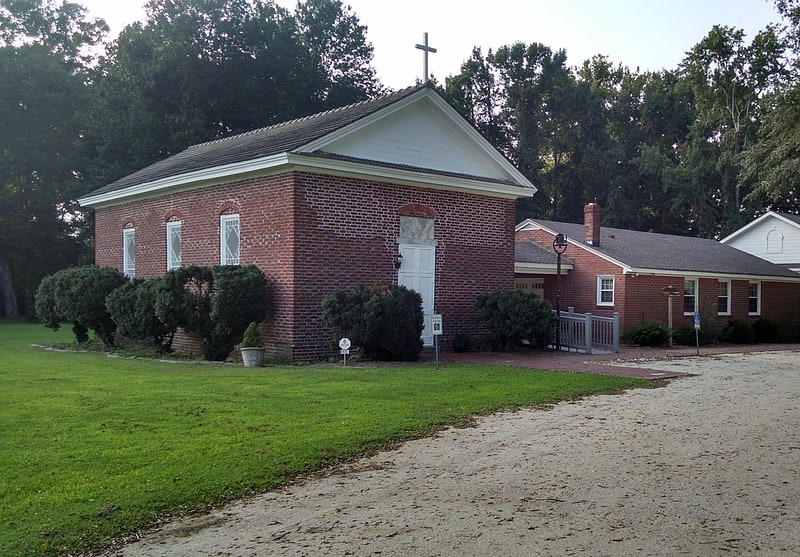
Episcopal church in Suffolk, Virginia. Glebe Church is a historic Anglican church in Driver, Virginia and its surrounding glebe. The church was built in 1737–1738, and is a rectangular, gable-roofed, brick church measuring 48 feet, 6 inches, by 25 feet, 4 inches. It was added to the National Register of Historic Places in 1973.[3]
Address: 4400 Nansemond Parkway, Suffolk (Cypress)
Whaleyville
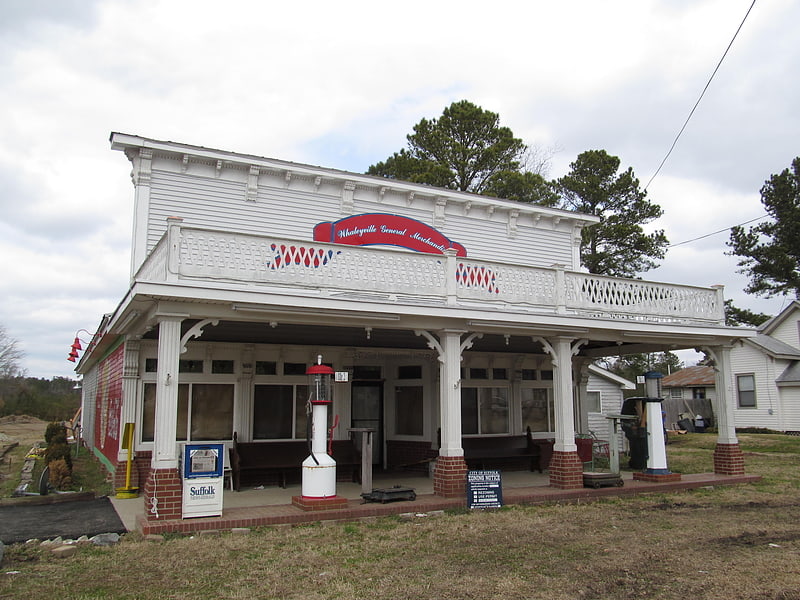
Whaleyville Historic District is a national historic district located at Suffolk, Virginia. The district encompasses 103 contributing buildings in the African-American community of Whaleyville in Suffolk. The district includes eight residences, two churches, two school structures, a train depot, a lodge, an outbuilding, and five commercial structures. They are in a variety of vernacular and popular turn-of-the 20th century architectural styles including Queen Anne and Bungalow. Notable buildings include the St. Stephens Holiness Church, Mineral Spring Baptist Church, Odd Fellows Lodge, McAlister Masonic Lodge, Bank of Whaleyville, and the Whaleyville Store.
It was added to the National Register of Historic Places in 1995.[4]
St. John's Church
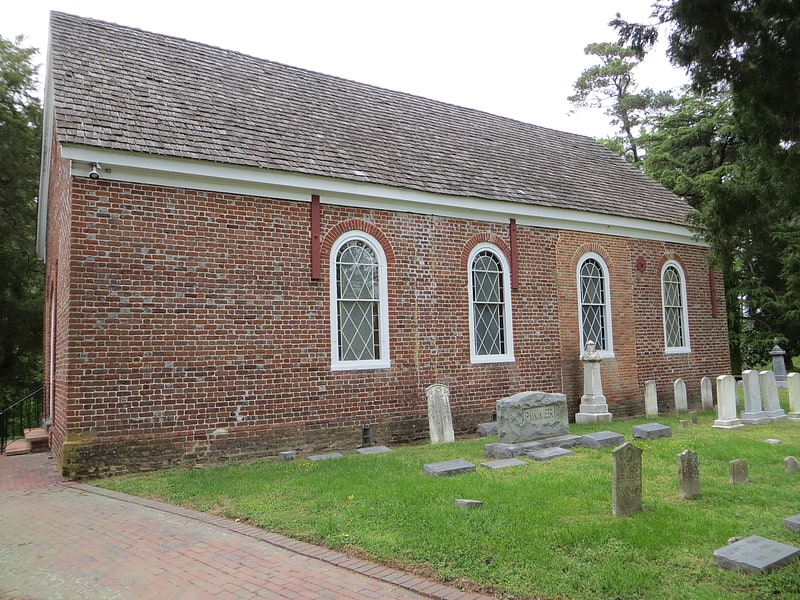
Episcopal church in Suffolk, Virginia. St. John's Church, also known as Chuckatuck Church is a historic Episcopal church located near Chuckatuck. Constructed in 1755, St. John's is the third church to occupy the site in a parish which was established in 1642. St. John's Church preserves an important role in the religious history of seventeenth century Virginia and as an architectural example of the evolving preferences of the Episcopal Church in the nineteenth century.
It was added to the National Register of Historic Places in 1973.[5]
Building at 216 Bank Street
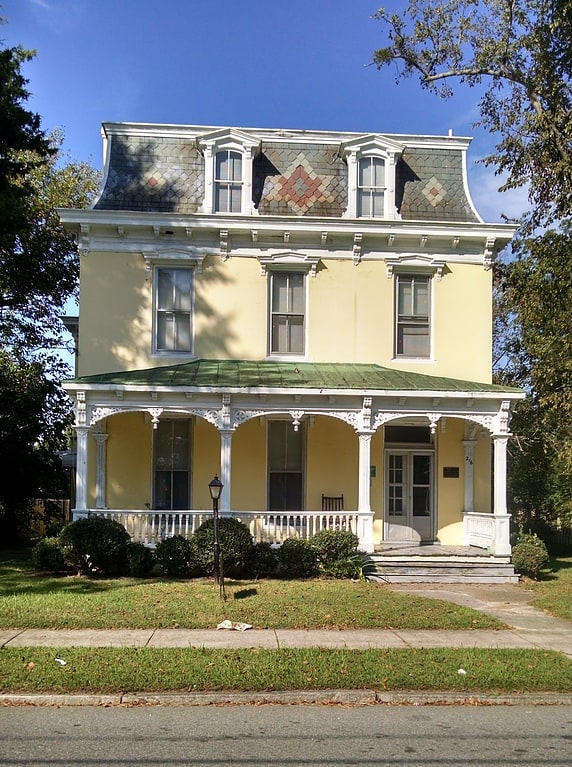
Building in Suffolk, Virginia. Building at 216 Bank Street, also known as Holland House Apartments, is a historic home located at Suffolk, Virginia. It was built about 1885, and is a 2 1/2-story, three bay stuccoed brick Second Empire style building. It has a polychromatic slate mansard roof and a full-width, one-story, hipped roof front porch. It was built for Colonel Edward Everett Holland as a single-family dwelling. It was occupied by the Suffolk Elks Lodge No. 685 from 1940 to 1965, then converted to a six-unit apartment building.
It was added to the National Register of Historic Places in 1985.[6]
Suffolk Historic District
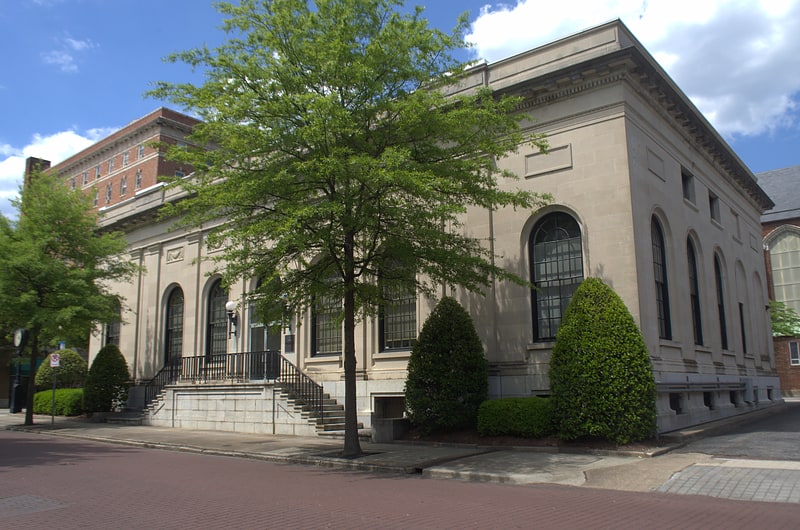
Suffolk Historic District is a national historic district located at Suffolk, Virginia. The district encompasses 514 contributing buildings, 3 contributing structures, and 3 contributing objects in Suffolk. The district includes a variety of residential, commercial, governmental, and institutional buildings. They are in a variety of vernacular and popular 19th and 20th century architectural styles including Greek Revival, Queen Anne, and Bungalow. Notable buildings include the Allmond Building, Macedonia A.M.E. Church, National Bank of Suffolk, the Old Post Office, old Nansemond County Courthouse, John Granberry house, Richard Seth Eley House, Jones Building, Suffolk Towers, Virginia Apartments, Causey-Kendrick house, Masonic Hall, Suffolk High School, Jefferson High School, old Methodist Church, St. Paul's Episcopal Church, Suffolk Christian Church, and Congregation of Agudath Achin. Located in the district are the separately listed Phoenix Bank of Nansemond, Professional Building, and Riddick House.
It was added to the National Register of Historic Places in 1987, with boundary increases in 1999, 2002, and 2004.[7]
West End Historic District
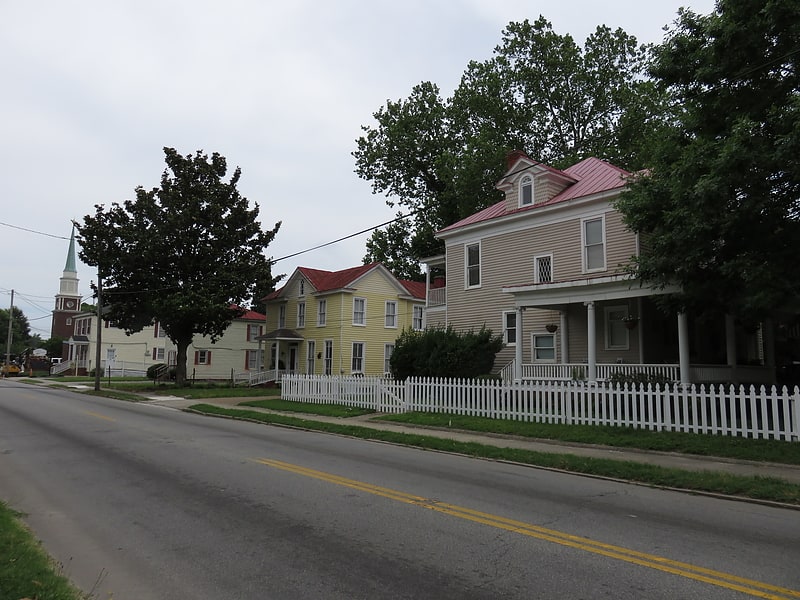
West End Historic District is a national historic district located at Suffolk, Virginia. The district encompasses 201 contributing buildings and 93 contributing structures in a primarily residential section of the city of Suffolk. The district includes buildings dating from the last decade of the 19th century through the first four decades of the 20th century in a variety of popular architectural styles including Queen Anne and Folk Victorian. The residences were developed to support the growing upper-, middle-, and working-class populations. Notable buildings include the J. C. Causey, Jr. House, Oxford United Methodist Church, and West End Baptist Church.
It was added to the National Register of Historic Places in 2003, with a boundary increase in 2004.[8]
Professional Building
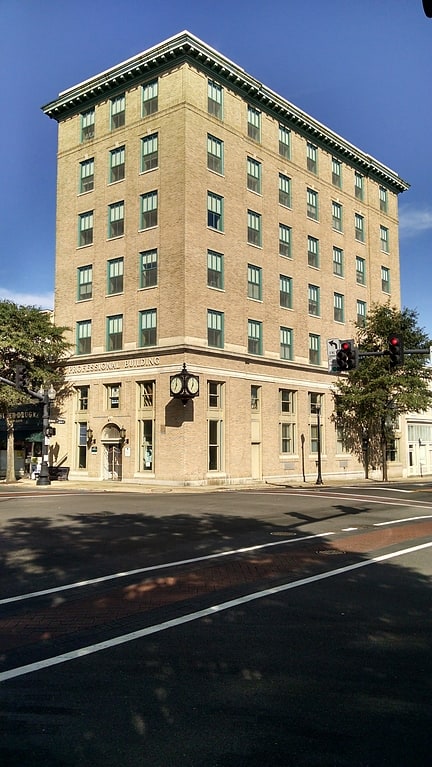
Building in Suffolk, Virginia. Professional Building, also known as the American Bank and Trust Company building, is a historic commercial building located at Suffolk, Virginia. It was built between 1916 and 1919, and is a seven-story, steel frame building with Pyrobar fireproofing. The building measures 35.2 feet wide by 81 feet deep. It is 80 feet tall and has Colonial Revival style architectural details.
It was added to the National Register of Historic Places in 1999. It is located in the Suffolk Historic District.[9]
Phoenix Bank of Nansemond
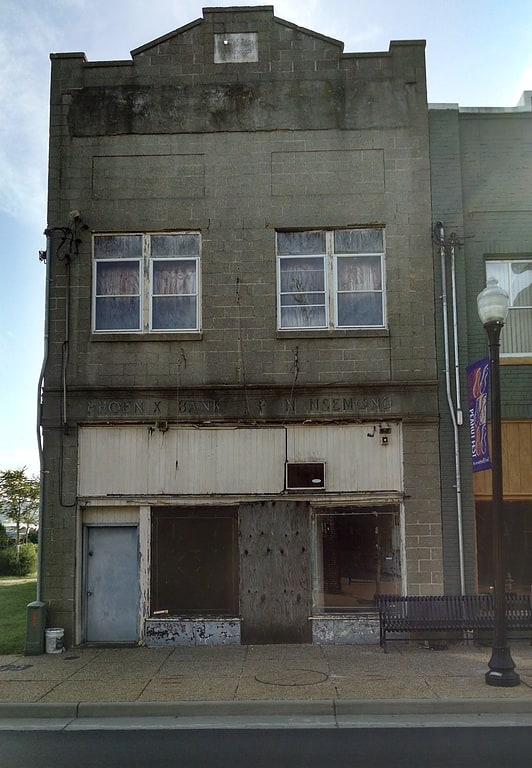
Phoenix Bank of Nansemond is a historic bank building located at Suffolk, Virginia. It was built in 1921, and is a two-story, two bay, rectangular brick building. The bank was founded by a group of African-American entrepreneurs in 1919 and served the black farmers and laborers of Suffolk and surrounding Nansemond County. The bank survived until 1931.
It was added to the National Register of Historic Places in 1991. It is located in the Suffolk Historic District.[10]